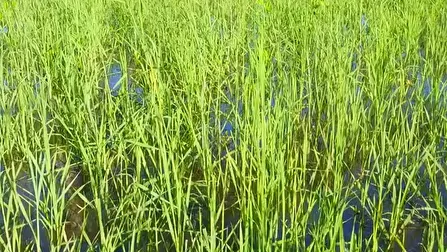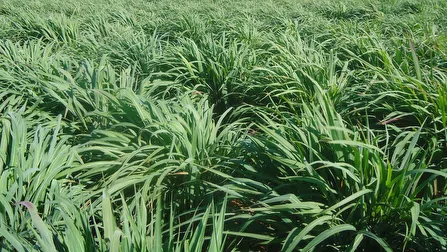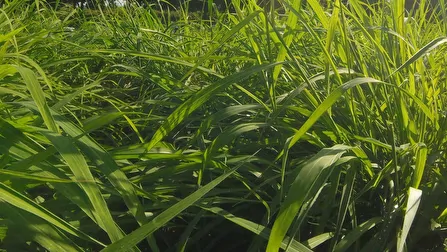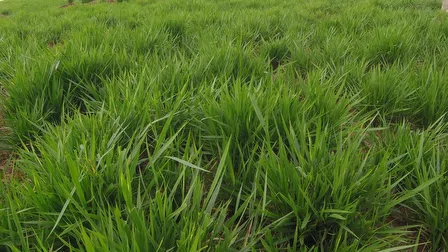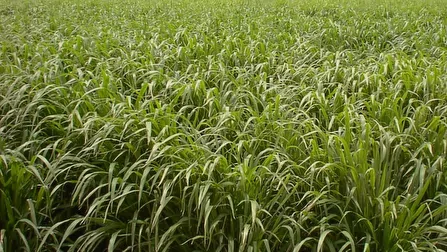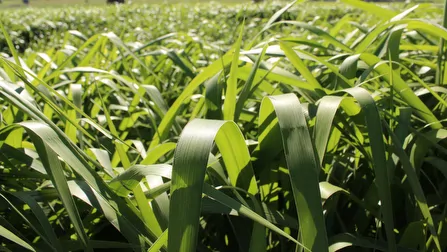Indicação
O Paredão se destaca pela excelente produção de forragem e sua qualidade nutricional, sendo recomendada para a produção de leite e carne, nas fases de cria, recria e engorda. É indicado para solos de alta fertilidade, corrigidos e adubados, no sistema intensivo de pastejo rotacionado com intervalos de descanso de 25-28 dias. Pode ser utilizado também para ensilagem.
Banco de Germoplasma Matsuda
Megathyrsus maximus cv. MG12 Paredão
Panicum maximum cv. MG12 Paredão
Certificado n° 20150086 até 08.12.2029
Alta fertilidade
Pastejo direto e silagem
30 a 35 t/ha/ano de matéria seca (M.S.)
10 a 16%
1,80m a 2,00m
55 a 59%
Excelente
Alta
Tecnicamente tolerante, devido à antibiose e a presença de joçal na base
Média
Perene
Utilização e Manejo
Devido a sua excelente qualidade nutricional e produção de forragem, é recomendada para a produção de leite e carne, nas fases de cria, recria e engorda. O início do pastejo deve ocorrer com plantas na altura de 80 a 90 cm, ou com intervalo de descanso em torno de 25 a 28 dias durante o período chuvoso. A saída dos animais deve ocorrer quando a altura das plantas atingir entre 20 a 25 cm do solo. Nesta altura ocorre a presença de joçal (na base da planta), fator que evita o consumo pelos animais.
Origem
Material proveniente da Matsuda Genética, que iniciou os trabalhos de seleção em 2004. Foram realizadas diversas recombinações e seleção de plantas com boa produção de forragem e tolerância aos ataques de cigarrinhas, inclusive a da cana-de-açúcar (Mahanarva fimbriolata).
Características Morfológicas
Gramínea de ciclo perene, plantas formando touceiras de crescimento ereto, com intenso perfilhamento basal, colmo com diâmetro médio, internódios médios a longos (22,25 cm) e sem cerosidade. Folhas com pilosidade na bainha, com arquitetura arqueada, lâmina foliar comprida e larga, de coloração verde escura, sem apresentar pilosidade. Apresenta joçal na base da planta.
Características Agronômicas
Exigente em fertilidade do solo, planta cespitosa, intenso perfilhamento basal, folhas largas, com excelente produção de forragem e nos ensaios realizados não verificou-se presença de ninfas e adultos de cigarrinhas.

